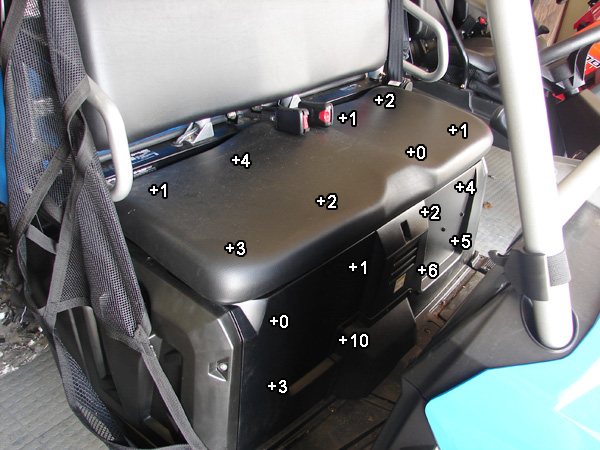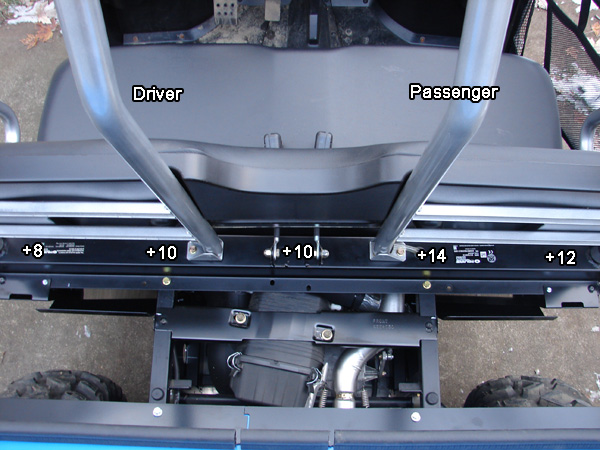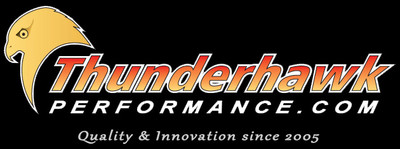Product Tech

Rear Mud-Blocker Tech
For years, Polaris has been building the Ranger with the engine exposed to the rear tires. This allows the rear tires to throw a huge amount of water, mud, rocks and other trail debris at the gas tank, battery and many critical engine components. This isn’t the best thing for these parts, and this design also makes clean-up after a ride a HUGE pain in the rear! We can’t count how many times people have commented that these openings should just be blocked-off. We’ve also had many people ask us why we didn’t make a rear mud-guard kit. (Note: We do now! Read on to get the details.)
By simply enclosing the rear wheel openings, you may block the mud & water but you also create a problem where the engine heat cannot escape and you now have the dreaded “Ranger Hot-Seat”. The engine operates at roughly 190 degrees, but the exhaust pipe generates heat exceeding 700 degrees. Polaris has carefully designed the CVT transmission air discharge duct to blow across the exhaust pipe to create air circulation and remove engine heat. When you simply enclose the rear wheel openings, this air-circulation is stopped and the engine compartment temperatures soar. The entrapped hot air increases the temperature of all surrounding surfaces, most notably the seat-bottom and the panel directly behind your legs. In addition, as this hot air seeks to escape, the gap between the cargo bed and the seat-back becomes a “chimney” and you are now exposed to a continuous flow of very hot air coming right up the occupants back.
Over the years, Thunderhawk Performance has built a number of variations of mud-blocker for our own Rangers, and we’ve learned a few things about what works and what doesn’t. Every new version that we’d build for our shop-Rangers improved upon our older designs, until we were satisfied that we had a kit that we could manufacture and sell that would not retain excessive amounts of heat. A combination of design features allows us to accomplish this. We have developed a vented mud-guard design to allow the heat to escape and to maintain airflow through the engine compartment. We have also designed a cargo-bed seal kit that stops the hot air from coming up between the dump bed and seat-back (this seal kit retains the regular dump function of the cargo bed).
After riding our Mid-Size Ranger 800 with these mud-guards installed, we were satisfied that we did not feel any significant heat problems. In August 2014, we did extensive heat testing on our Mid-Size 800 with this mud-blocker kit installed (including the cargo-bed heat seal). We measured temperatures inside the engine compartment, as well as temperatures outside that the driver (and passenger) would feel. Our efforts to reduce the heat build-up that would affect rider comfort were successful.
We have noted some of the actual temperature increases that we measured during our testing on the following two photos, and all temperature increases are summarized below:
- Inside engine compartment: +10 to +15 degrees
- Vertical plastic below seat (behind your legs): +0 to +10 degrees
- Seat cushion: +0 to +4 degrees
- Frame cross tube (where roll bar is mounted): +8 to +14 degrees
- Front of cargo bed: +2 to +7 degrees
- Seat back: No increase
As you can see there is a slight increase in temperatures when the Thunderhawk mud-guards are installed. Unfortunately, it is not possible to accomplish zero temperature increase when enclosing the engine compartment. As such, we do not recommend the installation of rear mud guards for anyone who is unhappy with the engine heat currently produced by their Ranger. In addition, anyone with a snorkel kit should not use any mud-blockers, as the snorkel has moved the CVT discharge duct that was designed to circulate cool air through the engine compartment, eliminating the source of airflow circulation within the engine compartment so that any enclosure will cause significant increases in temperature.
Click here for information about ordering this vented mud-guard kit on Thunderhawk's website.


